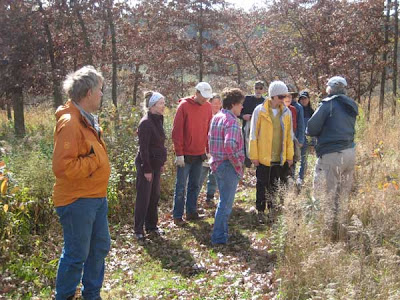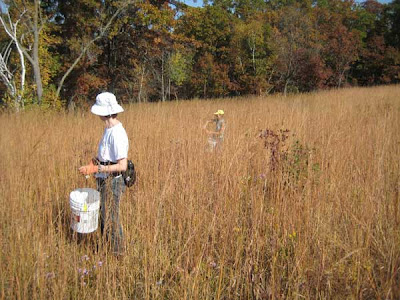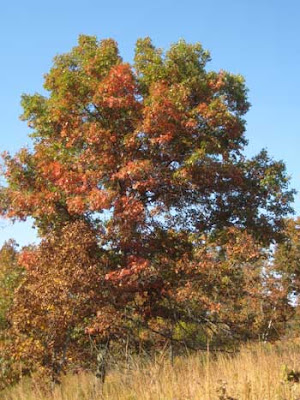Nice time to see prairie dropseed

Prairie dropseed (Sporobolus heterolepis) is one of the prime conservative prairie grasses and is a good indicator of a high-quality site. It has a C value (coefficient of conservatism) of 10 (the max!). The best sites are dry to dry-mesic prairie remnants. Now is a good time to survey such prairie remnants for this species, as its fall color and growth form are characteristic.
At Pleasant Valley Conservancy we had several remnants where prairie dropseed was present. The best was Unit 1 (Kathie's Prairie), which has dozens of colonies. Unit 4 (Tom's Prairie) had two colonies and nearby in Unit 10 there was a single clump growing out of the dolomite. Finally, there were some small colonies growing out of the dolomite on the Rocky Overlook (Unit 6).
After our first burn of Unit 1, in 1997, the dropseed flourished and set lots of seed. We used this to plant other areas. In addition, we set out greenhouse-raised plants in some likely areas. One of these was the sandy slope at the SE corner of the Pocket Prairie. Because of the sand, this area favors dry-site plants. (Lupine does very well here.)
It took quite a few years for dropseed to get well established at this site, but now it is really flourishing.
Several days ago we collected smooth aster seeds here and I was struck by the great color of the dropseed. As the photo shows, the smooth aster is also quite colorful.
Prairie dropseed isn't always this colorful. Yesterday I was helping collect seeds at Hagen Prairie and noticed that the dropseed was more of a plain brown color (although still growing in characteristic clumps).
















